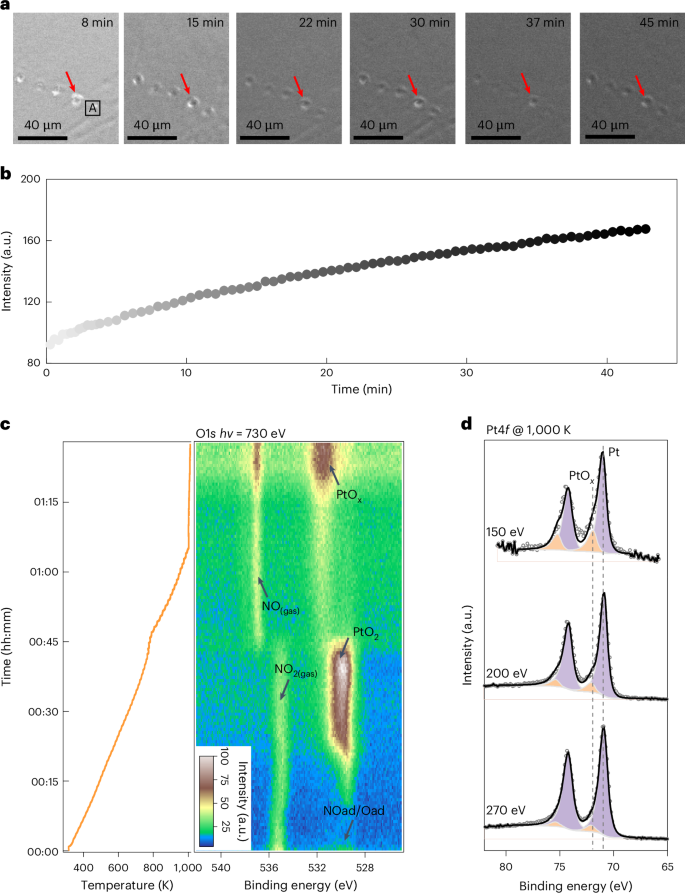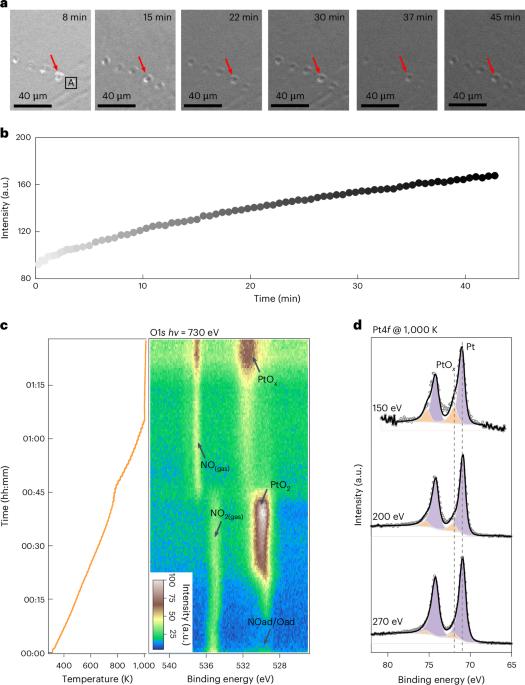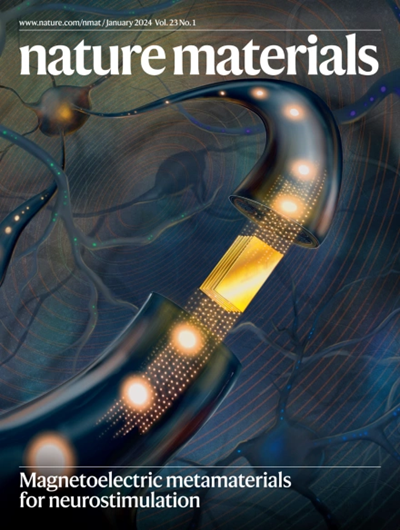二维晶体氧化铂
IF 37.2
1区 材料科学
Q1 CHEMISTRY, PHYSICAL
引用次数: 0
摘要
铂(Pt)氧化物是许多反应中的重要催化剂,但研究表明,它们会在高温下分解,从而限制了它们在高温应用中的使用。在本研究中,我们采用一系列原位方法,发现了一种二维(2D)结晶氧化铂,它具有显著的热稳定性(在二氧化氮条件下为 1,200 K)。理论模拟显示,这种二维氧化铂的特点是铂原子的蜂窝状晶格被包裹在双氧层之间,形成六芒星结构,由于其独特的结构,平面内应力最小,垂直键合增强。这些特点造就了它的高热稳定性。多尺度原位观测追溯了这种二维氧化铂从α-PtO2 的形成过程,提供了从原子到毫米尺度对其形成机制的深入了解。这种二维铂氧化物具有出色的热稳定性和独特的表面电子结构,颠覆了以往认为铂氧化物在高温下不存在的观点,而且还具有独特的催化能力。这项研究拓展了我们对铂氧化物的认识,并揭示了氧化铂在高温环境下的氧化和催化行为。本文章由计算机程序翻译,如有差异,请以英文原文为准。


Two-dimensional crystalline platinum oxide
Platinum (Pt) oxides are vital catalysts in numerous reactions, but research indicates that they decompose at high temperatures, limiting their use in high-temperature applications. In this study, we identify a two-dimensional (2D) crystalline Pt oxide with remarkable thermal stability (1,200 K under nitrogen dioxide) using a suite of in situ methods. This 2D Pt oxide, characterized by a honeycomb lattice of Pt atoms encased between dual oxygen layers forming a six-pointed star structure, exhibits minimized in-plane stress and enhanced vertical bonding due to its unique structure, as revealed by theoretical simulations. These features contribute to its high thermal stability. Multiscale in situ observations trace the formation of this 2D Pt oxide from α-PtO2, providing insights into its formation mechanism from the atomic to the millimetre scale. This 2D Pt oxide with outstanding thermal stability and distinct surface electronic structure subverts the previously held notion that Pt oxides do not exist at high temperatures and can also present unique catalytic capabilities. This work expands our understanding of Pt oxidation species and sheds light on the oxidative and catalytic behaviours of Pt oxide in high-temperature settings. Pt oxides are essential catalysts in many critical reactions, but are typically unstable and prone to evaporation above 700 K. A two-dimensional layered Pt oxide with exceptional thermal stability is introduced, capable of surviving at high temperatures.
求助全文
通过发布文献求助,成功后即可免费获取论文全文。
去求助
来源期刊

Nature Materials
工程技术-材料科学:综合
CiteScore
62.20
自引率
0.70%
发文量
221
审稿时长
3.2 months
期刊介绍:
Nature Materials is a monthly multi-disciplinary journal aimed at bringing together cutting-edge research across the entire spectrum of materials science and engineering. It covers all applied and fundamental aspects of the synthesis/processing, structure/composition, properties, and performance of materials. The journal recognizes that materials research has an increasing impact on classical disciplines such as physics, chemistry, and biology.
Additionally, Nature Materials provides a forum for the development of a common identity among materials scientists and encourages interdisciplinary collaboration. It takes an integrated and balanced approach to all areas of materials research, fostering the exchange of ideas between scientists involved in different disciplines.
Nature Materials is an invaluable resource for scientists in academia and industry who are active in discovering and developing materials and materials-related concepts. It offers engaging and informative papers of exceptional significance and quality, with the aim of influencing the development of society in the future.
 求助内容:
求助内容: 应助结果提醒方式:
应助结果提醒方式:


